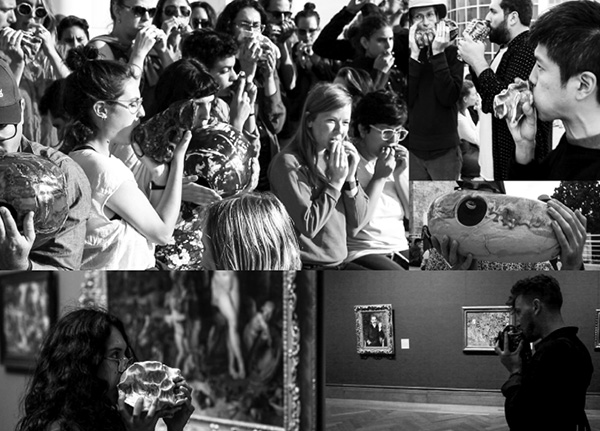
JUICERINAS AT THE GETTY
first performed on June 10, 2016
Getty Center, Los Angeles, CA
performed once in 2016
MICHAEL PARKER / WESLEY HICKS
Los Angeles, CA
335796065r335796065o335796065u335796065t335796065e335796065s335796065a335796065n335796065d335796065m335796065e335796065t335796065h335796065o335796065d335796065s335796065@335796065g335796065m335796065a335796065i335796065l335796065.335796065c335796065o335796065m335796065 335796065/335796065 335796065w335796065e335796065s335796065l335796065e335796065y335796065h335796065i335796065c335796065k335796065s335796065@335796065a335796065l335796065u335796065m335796065.335796065c335796065a335796065l335796065a335796065r335796065t335796065s335796065.335796065e335796065d335796065u
michaelparker.org
JUICERINAS AT THE GETTY
MICHAEL PARKER / WESLEY HICKS
Working together, we made over 80 ceramic, microtonal Juicerinas (a type of flute we collaboratively invented). The flutes are available to be democratically played by anyone, even those unfamiliar with playing an instrument. These pitch fluid instruments were given simple text-based scores, guiding the performers to interact with art and architecture at the Getty Center. Various interactions included joining in with the birds in 17th century French tapestries, calling out from liminal spaces between museum stairways, and forming a cacophony of sound as the 80+ performers joined together on the front steps of the museum.
The instruments themselves varied in size from smaller than a little finger, to as large as a watermelon. They were glazed vibrantly in red, blue, and purple and were constructed in various amorphous shapes. The shapes were based on Michael’s citrus juicers and melon sculptures from his project Juicework at Human Resources —the project that led to the instruments’ development. We gave them the name Juicerina as it was a hybrid of the form of a juicer and function as an ocarina—which Wesley has been making since he was fourteen. Juicerinas are capable of playing graceful pitch bends that are bird like or whale, like depending on the size of the instrument. They do not easily play familiar melodies. The pitch is delicate compared to the specific and rigid pitches found on most flutes, easily changed with gentle motions of the hand. The construction of the instruments makes them intuitive to learn and play, with most players capable of museum quality performance on the instrument within ten minutes.
At the Getty Center we set up several events involving the use of these instruments. To start, performers gathered at the front of the museum, performing a cacophony before slowly separating from one another, walking through the interstitial and liminal spaces of the museum’s exterior.
The second major performance started with one or two performers in each of the 60+ galleries of the museum. The score called for gestural conversations with specific works of art—those carrying references to sound and labor. Performers improvised what they felt were appropriate sounds given their instruments’ range. The performance finished with a re-gathering at the central fountain and a final chaotic cacophony of sound.